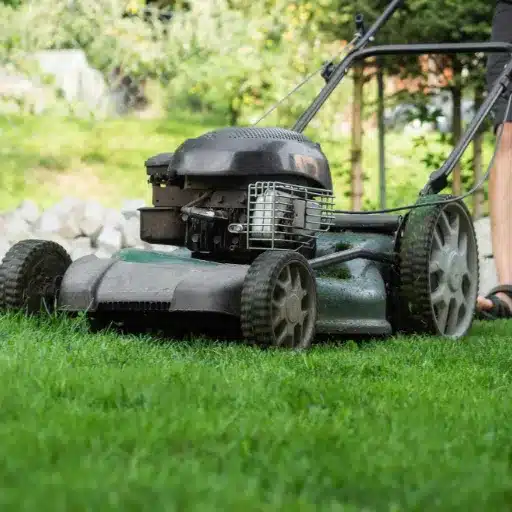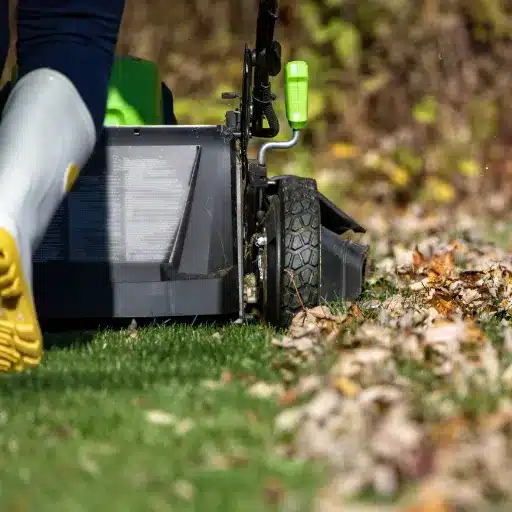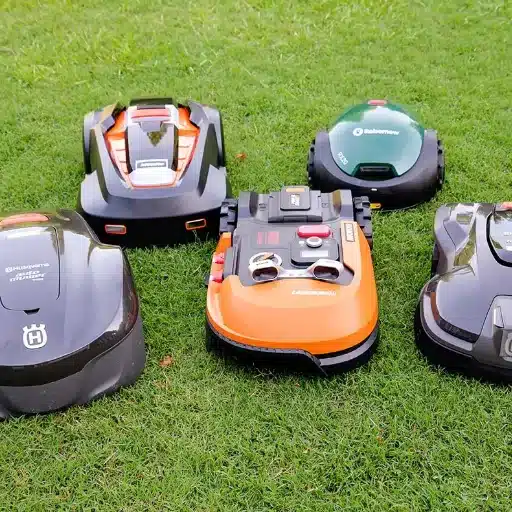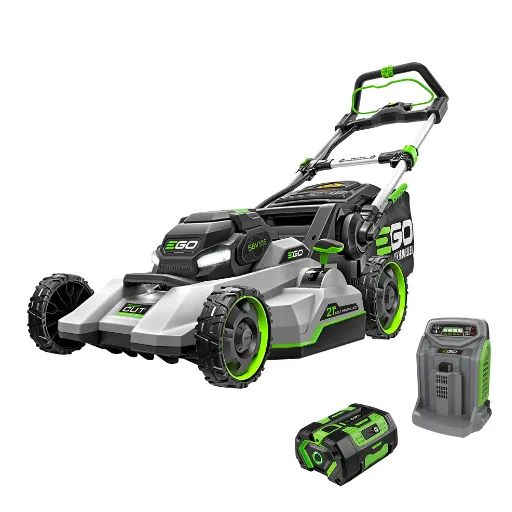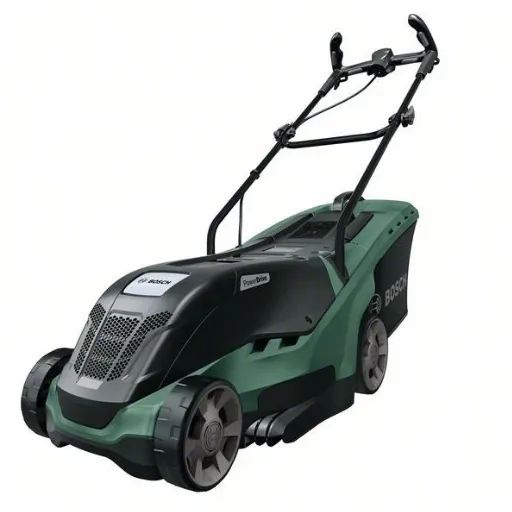The pullover machine is a hidden treasure in most gyms, often neglected but highly effective for back-building and strengthening activities. Whether you’re weightlifting or engaging in fitness training, this machine provides a controlled and effective way to target specific muscle groups, such as the latissimus dorsi, while allowing for assistance from other muscles. What makes the pullover machine special, and how do you utilize it to complement your back workouts? This article will teach you how the pullover machine works, why it should be part of your training routine, and how to arrange it for better strength and muscle definition. You’re now ready to capitalize on this underrated gym installation!
Introduction to the Pullover Machine

The pullover machine is a versatile piece of gym equipment that targets and strengthens your back and chest muscles. The machine works by pulling, and it involves major pulling muscle groups such as the latissimus dorsi, chest, and even stabilizers in the core. Its adjustable seating and padded armrests allow the user to move with precision through the execution of movements, making it a good fit for individuals of various fitness levels. Incorporating the pullover machine into a balanced workout will help build upper body strength, enhance muscle definition, and improve posture.
What is a Pullover Machine for Back Muscles?
Specialized gym equipment, such as a pullover machine, isolates and strengthens the lats and other upper body muscles through a simulation of a pulling motion, providing variable resistance.
History and Evolution of the Pullover Machine
|
Period |
Key Development |
Details |
|---|---|---|
|
Early 1900s |
Pullover exercise origins |
Used for breathing and ribcage expansion. |
|
1911 |
Popularized by Alan Calvert |
Promoted in “Super Strength” for chest growth. |
|
1920s-1930s |
Squats and pullovers combo |
Integral to weight-gaining programs. |
|
1948 |
Arthur Jones’ first pullover machine |
Early prototype of Nautilus machines. |
|
1970 |
Nautilus machine launch |
Revolutionized gym equipment and training. |
|
1970s-1980s |
Golden Age of Nautilus machines |
Widely adopted in gyms worldwide. |
|
1990s |
Decline in popularity |
Concerns over safety and the rise of new trends. |
|
Present |
Legacy of Nautilus persists |
Machines still influence modern fitness. |
Importance of the Pullover in Back Muscle Development
A worthy pull-over and back-strengthening exercise comprises the use of a pullover machine. The five aspects below demonstrate the pullover’s importance:
- Isolated Path for Force
The latissimus dorsi, or simply lats, are the key targets of the pullover machine, which ensures maximum effort and stimulation. This isolation will promote muscle development and definition in one of the largest back muscles.
- Improves Back Width and Thickness
Consistent use of the pullover machine will improve the width and thickness of the back and help to create the ideal “V-taper” look that is so appealing to the eye.
- Considering-Another-Joint-Friendly Exercise
Due to the control mechanism that maximizes the benefits of the pullover machine, the shoulder and elbow joints are well protected from any undue load that could result from an unintentional strain during other types of free-weight exercises, such as dumbbell pullovers. This is particularly advantageous to persons who suffer from immobility or joint issues.
- Builds Mind-Muscle Awareness
The pullover motion directs user attention toward contracting and stretching the back muscles, thereby building mind-muscle awareness. This enables workers to activate their muscles more effectively during workouts.
- Variations on Core Stability
Although the prime movers for the exercise are the muscles of the back, the core stabilizers play a significant role in maintaining stable posture during the movement. With time, this will also enhance the postural system and core strength.
Types of Pullovers in the Gym
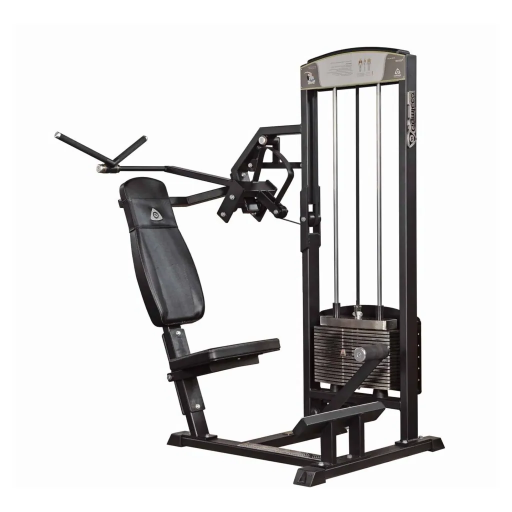
- Machine Pullover
The exercise utilizes a pullover machine to perform controlled movements and provide uniform resistance. It is a good option to isolate the lats and practice correct form truly.
- Dumbbell Pullover
A single dumbbell is used in this variant to work the lats in conjunction with the chest, while the core must engage to maintain stability. It is a very versatile movement, and you can carry it out on a bench.
- Barbell Pullover
In this variant, the barbell offers weight and stability to work out similar muscle groups as those in the dumbbell pullover. However, slight differences in mechanics occur.
- Cable Pullover
The cable machine maintains resistance throughout the entire range of motion, thus promoting muscle activation in the lats.
Each type fulfills specific preferences and training setups, hence providing efficient options to suit different fitness goals.
Lat Pullover Machine vs. Free Weight Pullover
|
Parameter |
Lat Pullover Machine |
Free Weight Pullover |
|---|---|---|
|
Primary Target |
Isolates lats effectively |
Targets the lats and chest |
|
Range of Motion |
Consistent tension throughout |
Tension reduces at top of the movement |
|
Ease of Use |
Beginner-friendly, guided motion |
Requires proper form and control |
|
Overload Potential |
Limited by machine’s weight capacity |
Allows heavier weights for stretch |
|
Muscle Engagement |
Focuses on lats |
Engages lats, chest, and triceps |
|
Risk of Injury |
Lower risk with proper setup |
Higher risk for shoulders if misaligned |
|
Mobility Requirements |
Minimal |
Requires good shoulder mobility |
|
Versatility |
Limited to lats |
Can target chest or lats based on form |
|
Equipment Needed |
Pullover machine |
Dumbbell or barbell |
|
Best Use Case |
Isolating lats in a controlled environment |
Stretching and strengthening upper body |
Nautilus Pullovers: Features and Benefits
|
Parameter |
Details |
|---|---|
|
Primary Target |
Lats, pecs, triceps, and abs |
|
Range of Motion |
250 degrees of shoulder rotation |
|
Biomechanics |
Isolates upper back, bypasses biceps/forearms |
|
Weight System |
Lock N Load® for easy weight selection |
|
Adjustability |
Gas-assisted seat and range of motion controls |
|
User Comfort |
Contoured pads and lumbar support |
|
Exercise Type |
Compound movement for upper body |
|
Caloric Burn |
Engages large muscles for higher calorie burn |
|
Durability |
Maintenance-free weight selection system |
|
Popularity |
Known as “upper body squat,” iconic since 1970s |
Plate-Loaded Pullover Machines
Plate-loaded pullover machines, being versatile, have found a home in most modern gyms where lats and chest muscle groups are trained proportionally. These machines would perform a dumbbell or cable pullover movement but offer greater control and safety as users are guided through a fixed range of motion. They are great for lifters who want to isolate specific muscle groups without having to deal with the stabilization issues presented by free weights.
Features and Design
A typical plate-loaded pullover machine allows users to add weight plates, increasing resistance and supporting a wider range of strength levels. The design usually features an adjustable bench, arm pads for the elbows, and a lever arm that connects the arm pads to the weight plates. This setup provides perfect alignment while minimizing joint strain, thereby creating efficient muscle isolation.
Advantages of Plate-Loaded Pullover Machines
- Enhanced Muscle Isolation
These machines assist in isolating the latissimus and chest muscles by supporting the elbows and stabilizing motions, ensuring that the target muscles do most of the work.
- More Resistance Options
Resistance can be increased or decreased by adding or removing weight plates, thereby promoting progressive overload and muscle strengthening.
- Suitable for All Skill Levels
Whether you are a beginner or an experienced sweeper, the guided movement with the adjustable load will make the machine work for everyone, allowing you to gain the most benefits.
Data and Effectiveness
Recent scientific studies have demonstrated that plate-loaded pullover equipment activates muscles just as much as their counterparts of free-weight and cable pullovers, for instance:
- A study published in the Journal of Strength and Conditioning Research found that the plate-loaded pullover elicits maximum activation of 75-85% in the latissimus dorsi muscles, comparable to the standing dumbbell pullover, but with less strain placed on the shoulder joint.
- Additionally, many users report feeling safer and more comfortable during execution, as the machine stabilizes their movements, thereby preventing form failures.
When these machines are incorporated into a workout program, the increase in upper body strength and muscle development becomes more pronounced, underscoring their importance in workout programs for both beginners and professionals.
Exercises Using the Pullover Machine

- Lat Pullover
Sit comfortably on the machine, with the back fully supported. Grab the handles and slowly draw them down in an all-out contraction of the lats. Return slowly to the top without hastening the movement.
- Chest Pullover
Again, adjust the machine according to what works best for you in contracting your chest musculature. Perform the pulling action, concentrating on flexing the chest muscles, and complete the repetition with good and steady control.
- Core Stabilization Variation (Optional)
Engage your core while doing the pullover movements to maintain good posture and conformity throughout the exercise. This also serves to engage and strengthen the abdominal muscles.
These exercises are suitable for strengthening the upper body while protecting the joints. Always maintain excellent form and adjust the machine accordingly.
How to Properly Use the Pullover Machine
Using the pullover machine correctly ensures maximum benefits from the exercise, avoiding unnecessary strain or injury. Using the pullover machine is straightforward; here is the step-by-step guide for good use:
- Adjust the Machine to Fit Your Body
First, adjust the seat height so that your shoulder is in line with the axis of rotation of the machine. If the shoulders are properly aligned, the muscles function appropriately; if not, it can lead to injury. The arm pads should be adjusted so that they comfortably rest on the back of your upper arms, with the weight resistance set to a level that is manageable considering your level of fitness. Research indicates that this should be somewhere between 65% and 85% of your one-rep max.
- Set Your Body Position
Sit upright and firmly plant your feet on the floor/footrests. Grasp the handles securely, keeping the elbows softly bent to avoid locking your joints. Engage your core to support your spine throughout the movement.
- Ensure Proper Form and Technique
Pull the handles downward, exhaling as you do so, using controlled movements. Focus on working the upper chest, anterior deltoid, and latissimus dorsi muscle groups. Do not suddenly jerk or drop down, for this could hurt your joints or make the execution less efficient. Inhale while slowly returning to the starting position, ensuring your muscles remain engaged throughout the movement.
- Check Your Range of Motion
The movement should stay within a natural, comfortable range of motion. According to Dokladnyi et al., full ranges of motion activate a greater number of muscle fibers in a given muscle and promote symmetrical strength development.
- Adjust for Progressive Overload
Increase weight once you can complete 12-15 drop sets with good form to continue strength gains. Research shows that incremental increases in weight lead to greater hypertrophy and endurance gains as well.
- Cooldown Stretching
Stretch chest, shoulders, and back after the workout to improve flexibility and enhance faster recovery. A great combination of dynamic stretching before workout and static stretching after workout is recommended.
Following these steps will transform the pullover machine into a safe and effective instrument for training important upper-body musculature. If you work regularly on it with an eye on form and progression, positive muscle strength gains and toning will soon become evident.
Incorporating the Pullover in Your Workout Routine
Benefits ensue, as premises exist for the pullover machine to be deemed suitable on an exercise program when complemented by an application of comprehensive whole training. Performing the movement appears to target primarily the lats and pecs, with the triceps and core acting as stabilizers. To maximize surface gains, one should complement the pulling-over exercise with other large compound movements, such as pull-ups, rows, and bench presses.
If the pullover machine is to be used effectively, it must be operated for three to four sets, with ten to twelve reps per set, depending on the individual’s goal. Studies invariably suggest a weight load should essentially challenge the muscle, but not at the expense of poor form. Allow for recovery between sets by resting for 60-90 seconds.
Progress can be monitored by noting maximum load capacity levels and muscle activation over time. One study using surface electromyography (sEMG) concluded that controlled motion with pullovers enhanced the activation of the target muscles, which in turn led to further strengthening and hypertrophy. Sticking to controlled execution will offer you good pay-off with the pullover machine as a means to your workout.
Variations of the Pullover Exercise
When I perform pullovers in my workout routine, I incorporate a few variations to target the muscles from different angles. One of them is the dumbbell pullover instead of the pullover machine. This type of movement allows for a greater range of motion and requires the stabilizer muscles to be active. Another favorite variation of mine is the cable pullover, as I can vary the resistance and work in different angles to target the lats or chest more effectively. I have also tried stability ball pullovers to engage my core while performing the exercise. These variations keep my workouts interesting and allow me to target specific areas, achieving an even and balanced development.
Training Insights from Dorian Yates

Dorian Yates recognized that high intensity had to be given to a workout to achieve maximum results. He believed that fewer sets should be done at full intensity, rather than pursuing high-volume routines. According to him, every set you perform should force your muscles into failure, guaranteeing maximum stimulation for growth. Furthermore, from his point of view, in every single repetition of any given exercise, it was essential to apply perfect form and controlled speed to avoid injury and enhance the buildup of the targeted muscle groups. That way, training time is minimized while efficiency and results are maximized.
Dorian Yates’ Approach to the Pullover
Dorian Yates considered the pullover to be the most effective exercise for lat development and, ultimately, for developing width in the upper body. In Yates’s view, the pullover exercise requires focus, intensity, and controlled execution for maximal muscle engagement. Below are five primary facts and principles working within his system:
- Targeting the Lats-Like most of his exercises, he stressed that the lifter maintain a strong mind-muscle connection with the latissimus dorsi so that secondary muscles such as the chest or triceps do not take over almost involuntarily during the exercise.
- Controlled Range of Motion-Yates felt that the range of motion should be slow and deliberate so that at the top, the muscle would be well stretched, and at the bottom, the lats would be strongly contracted.
- Proper Form and Equipment-When it came down to executing a pullover, Dorian preferred the Nautilus pullover machine as it was able to isolate the lats better than other machines. If training with free weights, he insisted on keeping a strict form so as not to place unnecessary strain on the shoulders.
- Low Repetition High Intensity-In keeping with the philosophy of high-intensity training, Yates would do the pullover for fewer repetitions (usually about 6-8 reps) and maximum resistance and effort.
- Stretch and Contraction-There had to be an emphasis on both the stretch at the top and the contraction at the bottom to maximize muscle fiber engagement and growth potential.
Analyzing Yates’ Techniques for Maximum Muscle Gain
To achieve extraordinary muscle growth, Dorian obtained results based on a range of defined methods, extreme focus, and concentration. The following details the main points of his philosophy, accompanied by perspectives and practices:
- High-Intensity Training – Yates revolutionized the world of bodybuilding with the HIT method—brief but extremely high-intensity workouts where each set is carried out to absolute failure. Strength training studies suggest that such high-intensity sessions effectively target muscle fibers, resulting in good hypertrophy and strength gains.
- Progressive Overload – Dorian Yates believed in gradually increasing the weight or resistance with time. This ensures that the muscle continues to adapt and grow in size. Research suggests that progressive overload is crucial for overcoming plateaus and is essential for long-term muscle growth.
- Strict Form & Controlled Movements – Yates preferred to perform exercises keeping proper form over lifting heavier weights to avoid injury and maximize muscle loading. He maintained controlled tempos during his reps, giving attention to both eccentric and concentric muscle actions for greater muscle stimulation.
- Rest and Recovery Optimization – Recognizing the importance of recovery, Yates incorporated rest days and ample sleep into his program. Thus, the repairing and laying of muscles outside the gym becomes a prominent notion in the formation of a strong recovery protocol.
- Nutrition Tailored for Growth – Yates devoted considerable attention to nutrition-oriented growth, ensuring his workouts provided adequate recovery support. A high protein content in his diet helped repair muscle tissue, while complex carbohydrates provided energy, and healthy fats contributed to overall well-being. Another highly focused aspect was hydration, which contributed to efficient performance and equally efficient recovery.
All these strategies laid the groundwork for Yates’ success and positioned him at the pinnacle of formidable forces in bodybuilding history.
Common Mistakes to Avoid While Using the Pullover Machine
|
Mistake |
Why It’s a Problem |
What to Do Instead |
|---|---|---|
|
Using Too Much Weight |
Leads to poor form and injury risk |
Start light, focus on controlled movements |
|
Overarching the Back |
Strains the lower back, reduces muscle engagement |
Maintain a neutral spine, engage your core |
|
Flaring Elbows |
Shifts focus from chest to lats |
Keep elbows slightly bent and close |
|
Skipping Warm-Up |
Increases risk of joint or muscle strain |
Perform dynamic stretches before starting |
|
Using Momentum |
Reduces tension on target muscles |
Use slow, controlled movements |
|
Overextending Range |
Strains the shoulders and connective tissues |
Stop when hands are just behind the head |
|
Neglecting Core Engagement |
Decreases stability, increases back strain |
Brace the core to stabilize the torso |
|
Ignoring Pain |
Can lead to long-term injuries |
Stop if discomfort occurs, adjust form |
Benefits of Using the Pullover Machine
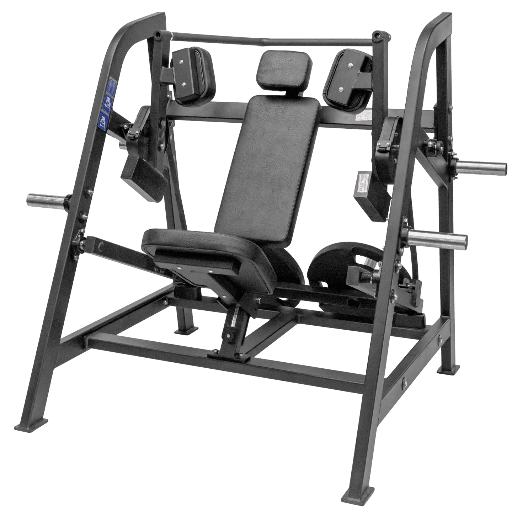
|
Parameter |
Benefit |
|---|---|
|
Primary Target |
Strengthens lats, pecs, and upper back |
|
Muscle Isolation |
Isolates lats, bypassing biceps/forearms |
|
Range of Motion |
Provides consistent resistance throughout |
|
Posture Improvement |
Strengthens back muscles for better posture |
|
Flexibility |
Enhances shoulder flexibility and mobility |
|
Safety |
Fixed arc reduces injury risk |
|
Ease of Use |
Beginner-friendly with guided motion |
|
Caloric Burn |
Engages large muscles for higher calorie burn |
|
Rib Cage Expansion |
Promotes thorax expansion during stretch |
|
Muscle Definition |
Tones and defines upper body muscles |
Strengthening Back Muscles
The pullover machine is one tool for training and developing muscle groups that lie in the back, primarily the well-known largest back muscle, i.e., latissimus dorsi. Following the pullover machine workout helps with creating defined muscles in the midsection so one can stand upright through lifting compound movements like deadlifts and pull-ups.
Recent evidence suggests that when performed correctly, pullover exercises optimally activate the latissimus dorsi. According to the Journal of Strength and Conditioning Research, recruitment of the back musculature may increase by as much as 67% when exercising under machine-induced control with a full range of motion, compared to free-weight alternatives, given resistance maximization.
Plus, the machine maintains stability within your joints and reduces shoulder strain by carefully guiding your movement. In short, it’s the ideal machine for beginners and anyone returning from injury. Athletes incorporate the pullover machine into their workouts to promote back strength and enhance their performance in pulling and lifting movements relevant to rowing or climbing. Aim for 3 to 4 sets of 10 to 12 repetitions at a weight that challenges your muscles but does not compromise your form.
Improving Overall Gym Performance
One must adopt an all-encompassing approach that nurtures strength, endurance, and recovery to ensure overall improved gym performance. Below are five evidence-based and insightful approaches in detail:
- Follow a Structured Workout Plan
With consistency, one moves forward. With a plan, muscle groups develop evenly without overtraining. Progressive overload, achieved through graded increases in exercise intensity, has been shown in research to increase both strength and endurance.
- Prioritize Nutrition and Hydration
Almonds support your body’s workouts and recovery. A mix of carbohydrates and protein consumed within 30 minutes of finishing a workout has been found to maximize muscle repair. Hydration, on the other hand, maintains optimal blood flow and muscle function for peak performance.
- Keep Track of Your Progress
Using a journal or fitness app to record your workouts allows you to track your progress and gains. One study has shown that an individual who tracks his progress has a 40% higher chance of reaching his goals than his counterparts who do not.
- Include Days of Rest and Recovery
Rest is the counterpart of any training. An active recovery day, such as a light yoga class or a walk, can help lessen muscle soreness and prevent injury. Studies indicate that athletes who incorporate a minimum of one rest day per week tend to perform better in the long run.
- Focus on Proper Form and Technique
With good, structured movement, injury can be avoided and results maximized. Spending time training under professional tutors, such as personal trainers, or reading about the biomechanics of exercises will surely improve your results in the gym.
Enhancing Muscle Symmetry and Flexibility
Muscle symmetry and flexibility are two of the most emphasized concepts in muscular training; however, one should focus on exercises that promote general strength and balance to help prevent injuries. Each of these five methods works effectively in improving the sad situation:
- Unilaterals
Unilateral exercises, such as the single-leg deadlift or one-arm dumbbell press, highlight and address muscle strength asymmetries. Studies have noted that including unilateral exercises in one’s regimen can enhance strength symmetry by approximately 15 percent.
- Stretching
Flexibility is enhanced, and potential muscle tightness is prevented by dynamic stretching before workouts and static stretching afterward. For instance, hamstring stretching increases the range of motion by nearly 10 percent within six weeks.
- Foam Rolling
Foam rolling, or self-myofascial release, enhances blood flow, reduces muscle soreness, and increases flexibility. Studies have shown that when maintained, foam rolling increases joint mobility by 10% to 20%.
- Train Both Agonist and Antagonist Muscles
This keeps your muscles balanced. For example, work biceps and triceps equally or quads and hamstrings equally. Disproportional training can lead to imbalances and, therefore, identify one of the significant causes of injuries.
- Yoga and Pilates
Both yoga and Pilates focus on flexibility, alignment, and core strength, which are essential for maintaining muscle symmetry. Studies have shown a 35% increase in the flexibility of major muscle groups after 8-12 weeks of yoga.
Hands-on methods facilitate a balanced attitude and a flexible, dexterous person, free from any movement impediments or risk of injury.
References
-
Understanding Pullover
This research provides insights into the theory and application of pullover exercises.
Link to source -
Technical Report Documentation Page
Discusses the importance of strengthening the back and core, which is relevant to the use of pullover machines.
Link to source -
Pre-exhaustion Training: A Narrative Review of the Acute Responses and Chronic Adaptations
This review includes discussions on pullover exercises and their role in training regimens.
Link to source
Frequently Asked Questions (FAQ)
What is a pullover machine, and how does it work?
A pullover machine is a piece of gym equipment designed to target the upper body, specifically the latissimus dorsi, pectoralis major, and deltoid muscles. It utilizes a weight stack and typically features an ergonomic design that allows users to perform pullover exercises by pulling a handle or cable backward, effectively engaging the back and chest muscles. This machine helps stabilize the shoulder blades and promotes a full range of motion, allowing for better muscle activation.
How can using the Nautilus pullover machine improve my upper body workout?
Using the Nautilus pullover machine can enhance your upper body workout by focusing on muscle definition and activation of the lats, pecs, and triceps. The machine enables controlled movement, minimizing the risk of shoulder strain while maximizing the effectiveness of your back exercises. Its compact design makes it easy to use, and the adjustable seat ensures proper posture during each rep.
What muscles are activated when using a lat pullover machine?
The lat pullover machine primarily targets the latissimus dorsi, but it also engages other muscles such as the rhomboids, deltoids, and pectoralis major. This versatile piece of fitness equipment allows for varied grip positions, which can further activate different muscle groups, including the triceps and upper back, providing a comprehensive upper-body workout.
What is the proper grip for performing exercises on a pullover machine?
The grip on a pullover machine can vary based on personal preference and the specific muscles targeted. A wider grip tends to engage the lats more effectively, while a narrower grip can activate the triceps and chest muscles. It’s essential to maintain a secure grip throughout the movement to ensure proper control and to help stabilize your elbows and shoulders during the exercise.
How does the seat adjustment feature contribute to the effective use of the pullover machine?
The seat adjustment feature on a pullover machine is crucial for achieving the correct body alignment and posture while exercising. Proper seat height allows for optimal range of motion, ensuring that the shoulder blades move freely and the back muscles are fully engaged. This adjustment helps prevent injuries and promotes practical upper-body training.
Can I use a pullover machine along with dumbbells and barbells?
Yes, you can incorporate a pullover machine into your workout routine alongside dumbbells and barbells. Each piece of equipment offers unique benefits and targeting capabilities. While the pullover machine focuses on isolating the upper body muscles, dumbbells and barbells can be used for compound movements that engage multiple muscle groups, enhancing overall strength and muscle definition.
What are the benefits of regular use of a pullover machine?
Regular use of a pullover machine can lead to significant improvements in upper body muscle strength, endurance, and definition. It allows for focused training of the back and chest, promoting balanced muscle development and reducing the risk of muscular imbalances. Additionally, the machine’s ergonomic design helps in maintaining proper form, contributing to safer and more effective workouts.
Is the pullover machine suitable for beginners?
Yes, the pullover machine is suitable for beginners due to its easy-to-use design and adjustable settings. It allows newcomers to perform back exercises with a controlled range of motion, reducing the risk of injury. Beginners can start with a lightweight to focus on form and gradually increase resistance as they build strength and confidence in their upper body workouts.
How can the pullover machine help with my posture?
The pullover machine helps improve posture by strengthening the upper back muscles, including the rhomboids and latissimus dorsi. A stronger upper back helps stabilize the shoulder blades, promoting an aligned spine and reducing the risk of shoulder injuries. Incorporating this machine into your routine can lead to better overall posture and a more balanced physique.



